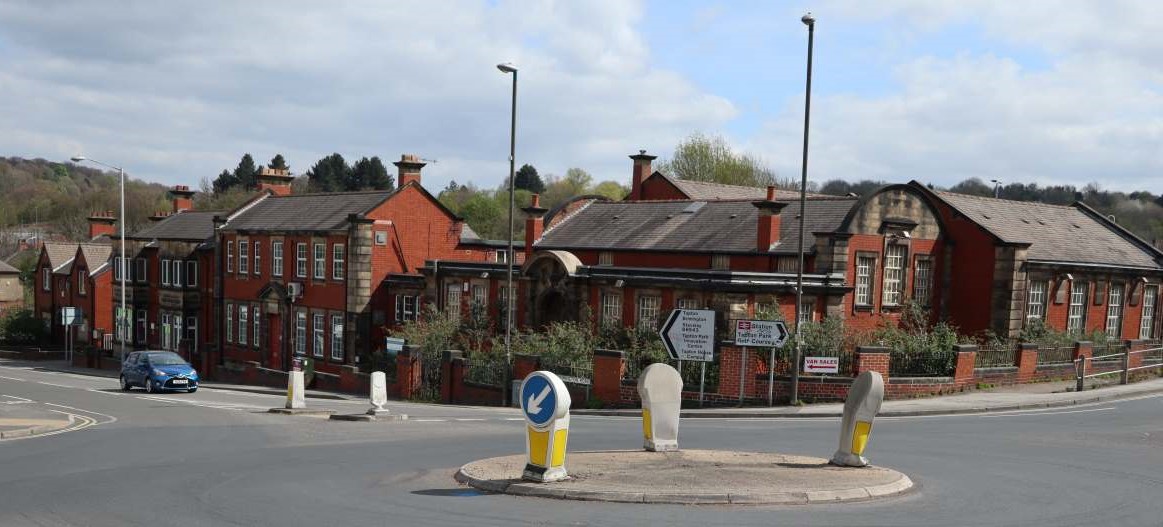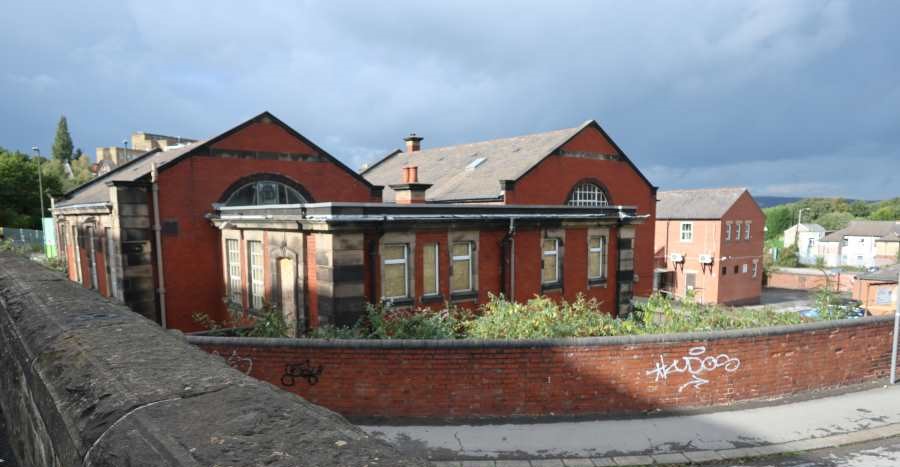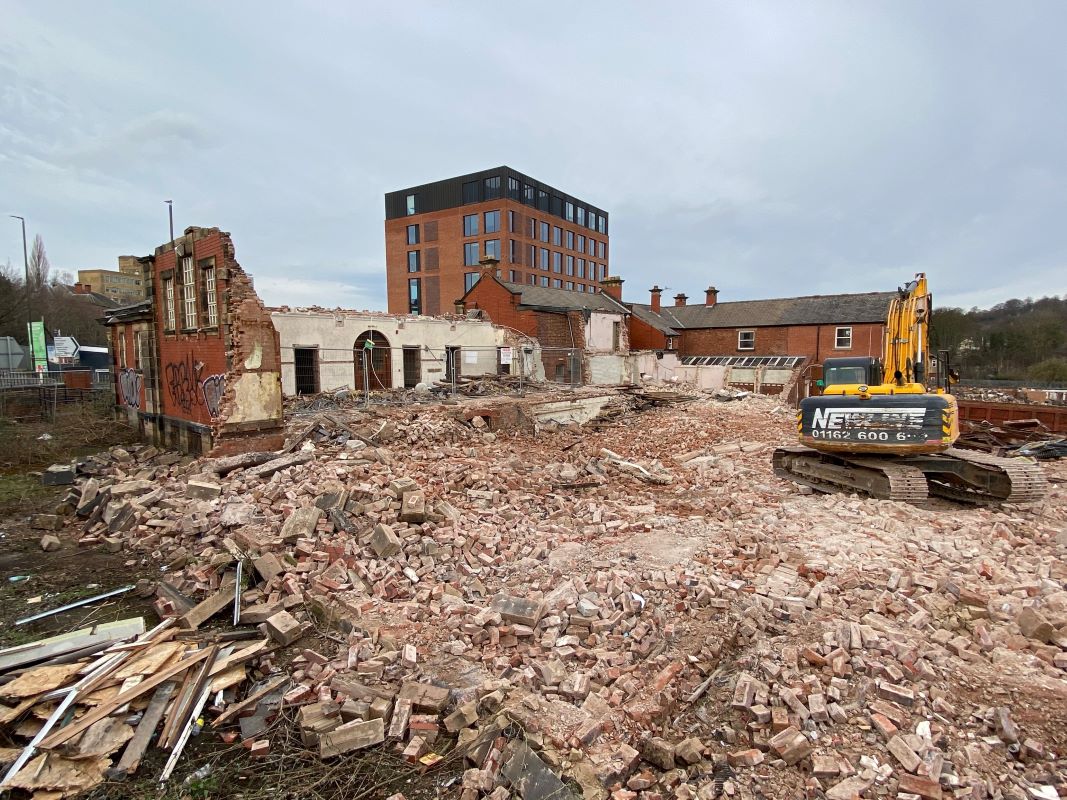In this post we look at the history the former courthouse near the railway station, on Brimington Road and Malkin Street, which is currently (28 January 2024) being demolished.
The building is to be replaced by a temporary car park until some form of firm proposals are developed for its replacement. Latterly part used by the probation service, but empty for some years, it is owned by a private company – not the council. There was no statutory protection for it as the building was not listed.

The building was first opened in 1914 at a cost of around £10,000 (excluding the site). It was built of Accrington Bricks, with stonework from Darley Dale. The architects were Messrs. Hunter and Woodhouse of Belper, with the main contractor the once well-known Chesterfield builders G. F. Kirk.
The building dated back to the days when the borough and county police forces were separate. It was needed to hold the Chesterfield County Petty Sessional Courts and for the county police. The new complex included a county police station, a house designed for the Deputy Chief Constable and ‘cottages’ for the ‘police groom and police clerk’. A lock-up and offices were included. To the rear was an exercise yard for prisoners, a space for drill, a stable, coach-house and a ‘motor-shed’.

There were three courtrooms – one of these designed for children, facilities for waiting and accommodating magistrates’ clerk and solicitors. The waiting hall had a concave ceiling, as did the two main court rooms, each with a semi-circular window containing stained glass of the county seal and with a ‘County of Derby’ inscription.
In its edition of 18 January 1913, the Derbyshire Times reported on the project’s recently started progress and carried the elevation reproduced in our post. But the newspaper also lamented that due to its situation the building would ‘not do full justice to the designers.’ The newspaper also said it would have liked the building erected in a more central position in the town. Never-the-less by May 1914 the same newspaper described the building as ‘plain and substantial’.
Opening of the new court house and the police facilities enabled and the ‘Standing Joint Committee of the County Council’, who had the building erected, to dispose of the old county police facility, adjacent to the workhouse, for £1,250 from the Board Guardians there.

By its edition of 23 May 1914 the Derbyshire Times was reporting that the building was nearly ready for use. The former Municipal Hall on Beetwell Street, where the petty sessions had been held (itself demolished in the 1970s), had proved woefully inadequate. Cases were averaging about 70 a week. Members of the public wishing to attend had been unable to gain access due to lack of space. ‘Numerous witnesses’, we are told, ‘week after week have been compelled to remain outside the court or adjourn to neighbouring hostelries until their services were required. Briefly, the state of affairs has been crush and confusion’. This was all ending with the new building’s opening.

Now the building’s time has come. Its legal business was transferred to the new courthouse on Tapton Lane some years ago. Part of the police complex was latterly used by the probation service. After some years being empty, like its municipal hall its predecessor, it is the subject of the demolition contractor. We must say that the majority of our members are probably sad to see the building go and are disappointed that room for it could not be found in whatever future plans there are for the area.
Sources used for this post:
- Derbyshire Courier – Saturday 18 April 1914.
- Derbyshire Times – 18 January 1913.
- Derbyshire Times – Saturday 23 May 1914.
